
Highlights From Trillium Woods
July 12th, 2013
I braved nuclear mosquitos, 6000% humidity, and the threat of thunderstorms to bring you these photos. Enjoy!
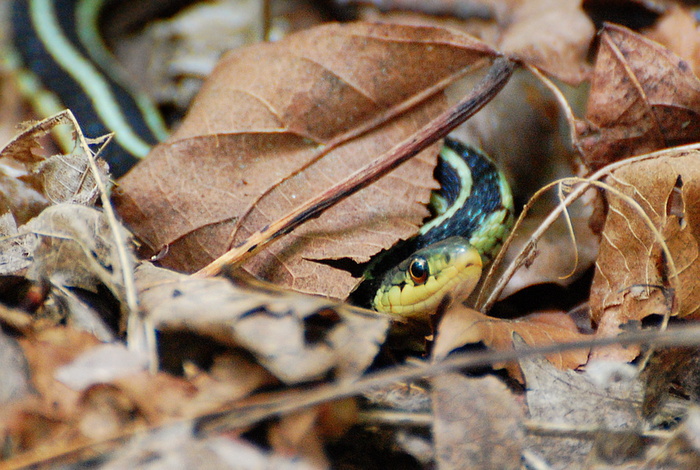
1680x1050 wallpaper

1680x1050 wallpaper
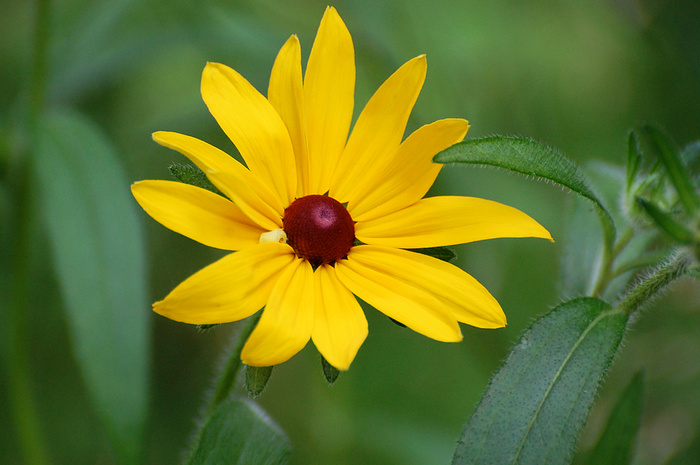
1680x1050 wallpaper
An Anxious Parent
July 9th, 2013
Like the Winter Wren at South March Highlands, this House Wren made a huge fuss of a distraction display when I stumbled into its territory. It perched conspicuously and scolded nonstop until I left. It probably had fledglings hidden about in the undergrowth.
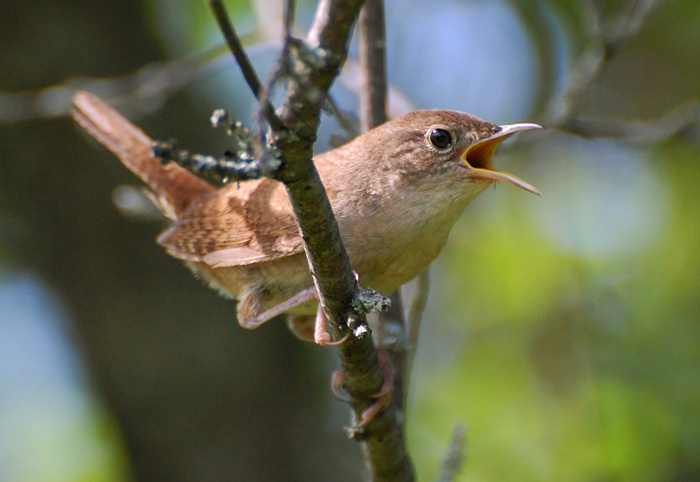
1680x1050 wallpaper
In many areas House Wren is a common backyard bird (thus the name), but in Ottawa it's quite localized--although in the past few years, I seem to be seeing more and more of them. Places I've found them singing include Shirley's Bay (where I found this one), Watts Creek Trail and adjacent Nortel woods, Petrie Island, and the lands south of the airport. They favor open woodlands with scattered trees, and nest in tree holes or bird boxes. They're usually shyer than this. This was my first-ever opportunity to photograph one up close!
As sweet as they look and sound, House Wrens have a sinister side. They've been known to sneak into the nests of neighboring birds and puncture their eggs. This is presumably a way of eliminating competition for resources. Another peculiar habit of the species is deliberately incorporating unhatched spider egg sacs into their nests. After the spiderlings hatch, they prey on the mites that would otherwise parasitize the vulnerable nestlings.
On My Balcony
July 5th, 2013
Busy parent robins have been flying back and forth for a couple weeks now, feeding this brood atop my second-floor balcony light. I consider them welcome neighbors. They're much cleaner birds than the pigeons that used to lay eggs on my apartment balcony.
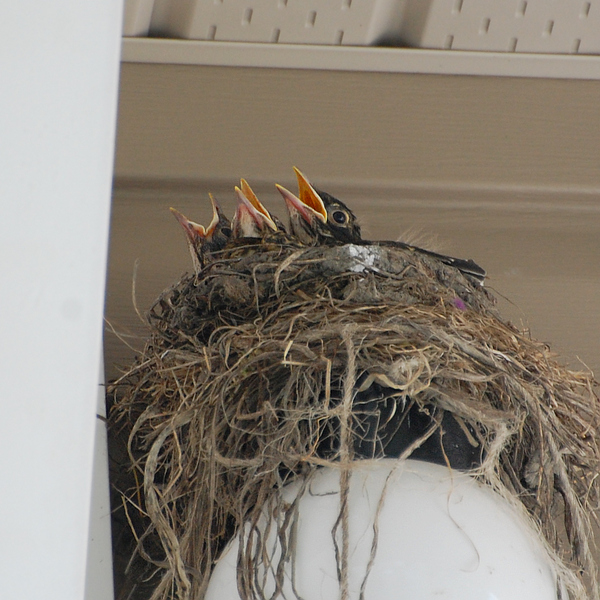
Don't worry, I'm not as close as it looks! I shot this from the back yard.
Tandem
July 3rd, 2013
Widow Skimmers mating in midair.
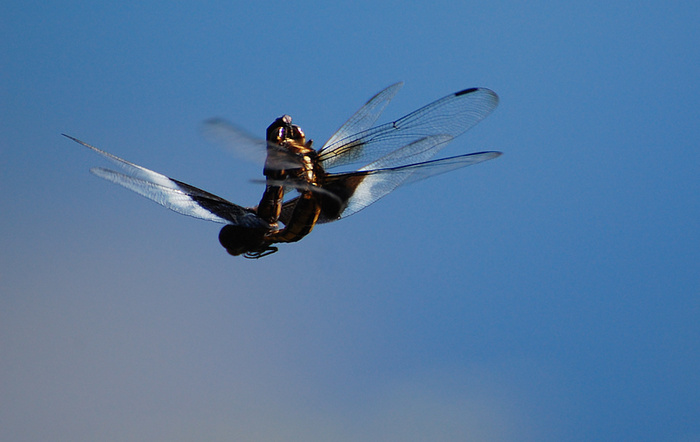
Racket-Tailed Emerald
June 29th, 2013
I love the sight of freshly emerged dragonflies, with their wings still glistening. My rough guess for this one is female Racket-Tailed Emerald, but feel free to correct me if you know better.

1680x1050 wallpaper
Blue Flag
June 27th, 2013
This magnificent wild iris grows around the edges of wetlands. For perspective, the surrounding stalks in the second photo are cattails.

1680x1050 wallpaper

Snipeapalooza
June 23rd, 2013
In the years I've been birding, snipe have always been mysterious, elusive creatures that I hear but don't see--or, more commonly, don't detect in any way at all. Although they're marsh birds, none of the many marshes I've explored in Stony Swamp seem to have snipe. At Shirley's Bay I've heard the sound of their winnowing after sunset, but almost never see them. I've seen them far in the distance once or twice in South March Highlands.

1680x1050 wallpaper
All that changed a week ago. I visited Bill Mason Centre at sunrise and found, not merely a sufficiency of snipe, not merely an abundance of snipe, but the motherload of snipe. Clearly that wetland is prime habitat, though why, I don't know. (I will say it feels very primeval. Like a place that humans have never interfered with, never despoiled.) They were everywhere, calling from the marsh, perching on the boardwalk railings, flying back and forth, and winnowing overhead all morning. It was incredible. Most incredible was the tameness of this so-often-elusive bird, allowing me to approach to within ten feet for close-up photographs. I can only guess that the schoolchildren who use these trails as an outdoor classroom have habituated the birds to human company.
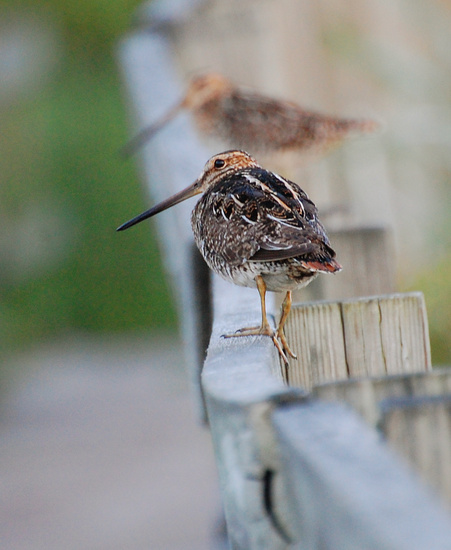
Snipe are unique members of the sandpiper family. While most of their relatives are coastal in the winter and breed in the far north, snipe are widely distributed inhabitants of freshwater wetlands. Their long bills are used to probe the mud for worms and other invertebrates. When flushed, they burst suddenly out of cover and fly away in a zig-zag pattern. I've read that the word "sniper" originally comes from them: if you're good enough to successfully hunt snipe, you're an expert marksman!
Snipe declare their territory by circling overhead in display flight. Air moving through the specialized tail feathers produces an eerie, tremulous "whoo-oo-whoo-oo" sound called winnowing. It can be heard from quite a distance away.
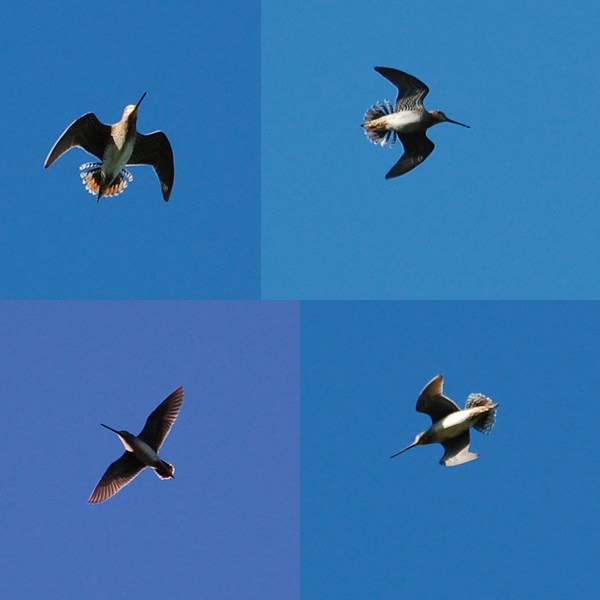
Blanding's Turtle at Carp Ridge
June 22nd, 2013
I found this turtle half-buried at Carp Ridge, apparently laying its eggs. It was big--about ten inches long, I'd say. My friend Gillian confirmed it from the photo as a Blanding's Turtle. I wish it and its offspring well. Blanding's Turtle is an endangered species. It maintains a toehold in just a few places around Ottawa, and the South March / Carp Hills area is one of them.
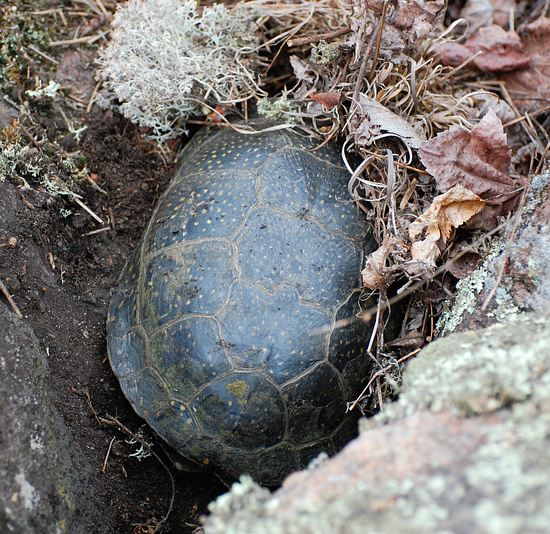
Too Perfect
June 20th, 2013
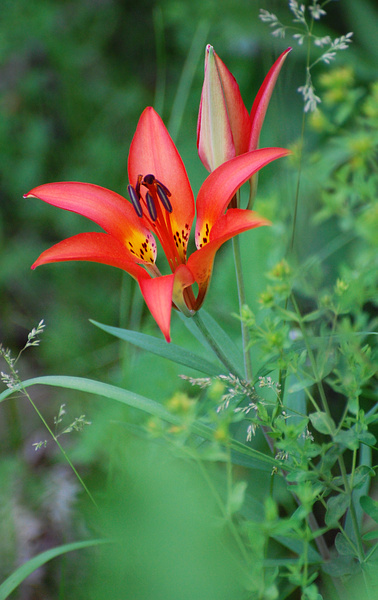
1680x1050 wallpaper
It looked like it belonged in someone's garden. But it was at Carp Ridge, blazing up out of the shady undergrowth amidst columbine and corydalis. Mike noticed it first. My flowers guide pegged it as a Wood Lily: a true Ontario wildflower, unlike the orange day-lilies that sometimes escape cultivation.
Fledgling Season
June 18th, 2013
At least for some birds, their young are out of the nest. Sometimes a young bird will leave the nest before it can fly, either by accident or on purpose (to escape nest parasites.) In such a situation, the parents get very nervous when large mammals (i.e. us) come lumbering by, and some will engage in what's called "distraction display" to try to lure us away from their vulnerable young. This is probably why those two towhees were so easily photographed! ("Easily" being a relative word, mind you. It still took a half hour's work to get unobstructed close-ups.)
I got a rather transparent distraction display this afternoon from a Winter Wren, one of the many breeding birds at South March Conservation Forest. As I approached, the normally furtive, mouselike adult wren twittered nonstop while perched in plain view. Its young, perhaps unwisely, got curious and hopped up on a log to look at me. It still had the colorful gape flanges of a nestling bird, so it probably couldn't fly yet, which explains its parent's dismay!
The adult continued to make a huge racket, so I followed it on down the trail. It led me down the proverbial garden path a bit, until it felt that I was far enough away, and then it clammed up and flew back to its young. The whole thing was very charming and definitely the high point of my hike.
|
